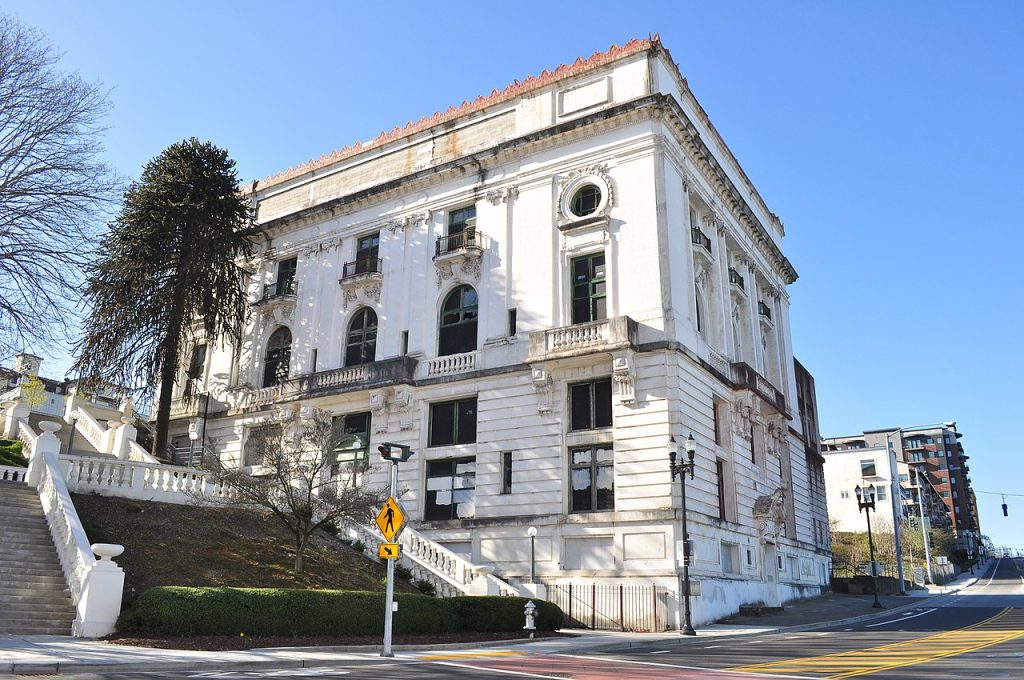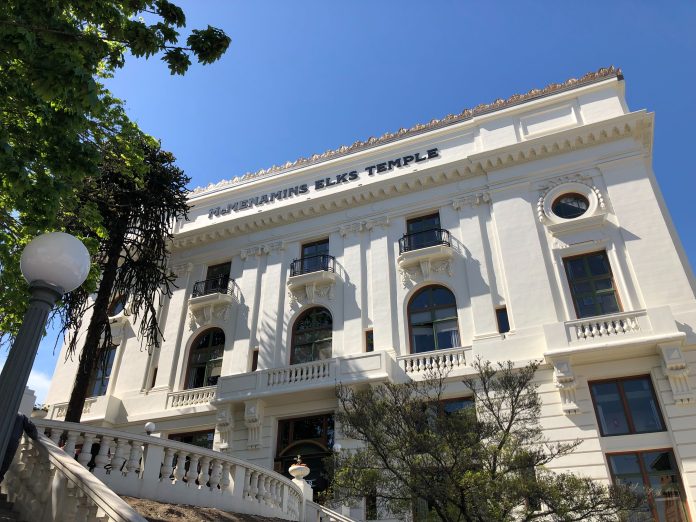The McMenamins Elks Temple in Tacoma has been open for two weeks. With its five eateries and bars, ballroom, and 45 hotel rooms, this new addition to downtown destination is drawing and will draw hundreds of people from throughout the city and the region.
McMenamins has been lauded for the attention its paid to a hundred-year-old building that, for a long time, sat empty and abandoned. The Elks Temple opened within a part of downtown that is already home to eateries, bars, businesses, and a park. On evenings and weekends, this three-block area of downtown, comprised of Pacific Avenue, Broadway, and Commerce Street and bordered by the city’s Theatre District, represents those downtowns that take on life after the workday and workweek.
As this area of the city continues to transform into the type of urban center we associate with larger cities with urban centers that are themselves destinations, questions about how people get to and from these necessarily arise. In this case, the question came up in relation to parking. Days before McMenamins was set to open the Elks Temple, a person asked on Facebook:
The original poster is, perhaps, asking where they might put their car when they come to Elks Temple. The secondary poster is asking, it seems, how the expected crowds, which are presumably going to arrive in cars, are going to affect the “surrounding neighborhood.” Both posters assume that the best or preferred way to get to Elks Temple is in a single-occupancy vehicle and are therefore asking a) how McMenamins is going to accommodate this particular person’s vehicle, and b) what McMenamins is planning to do to mitigate the impact of having more vehicles in the neighborhood.
There are many reasons—historical, cultural, economic—for why people think of cars first when it comes to getting to and from places. I don’t necessarily mean to rehash those reasons here, but I do want to extend the question to include the reasons people assume or expect that their vehicles should be accommodated, for free, by cities or by businesses such as McMenamins. One reason such an assumption persists lies in how businesses and other destinations in places like Tacoma encourage or discourage driving as a primary means of getting around.

In many cases people have been invited to expect abundant and free or subsidized temporary car storage in direct and indirect ways by developers, business owners, and cities themselves. As cities and regions continue to suffer the effects of having more and more cars on the road, the messaging business and other urban institutions do around mobility becomes more important, more impactful.
Increasingly, cities in the Northwest have moved to invite people into their cores, but not their cars. The City of Tacoma—its policymakers, businesses, cultural institutions, and developers—is at a crucial point in this regard. Leaders in the city are having to make deliberate decisions about their role in making neighborhoods and city centers more or less accessible, equitable, and healthy. Part of this work results from removing parking minimums from new developments, and limiting the amount of spaces and lots given over to temporary car storage. Pierce County is signaling that it is ready to forge ahead on these fronts.
But individual businesses, institutions of higher education, and other types of venues have a role to play in making Tacoma more accessible and safer, too. One way people are encouraged or discouraged to bring their cars into a city’s core is through messaging people receive in marketing materials. Too often, businesses and venues provide people with directions that privilege driving, ignoring (in many cases) the many options people have for getting into a place like downtown Tacoma.
Consider an email I received from Symphony Tacoma in the lead-up to a concert on April 20. It contained general concert information ranging from security measures to dining options. It also contained a section on directions and parking:
This is a clear example of how patrons and customers are constituted as drivers first and foremost by the businesses seeking their patronage. Even as the Pantages Theatre is located “in downtown,” a part of the city that is well-served by transit. The Pantages Theatre is located directly adjacent to the the Commerce Street transfer station; myriad bus lines from at least two transit agencies stop just feet away from the theatre entrance. Tacoma Link stops, conveniently, just about a block away at the aptly named “Theatre District Station.”
It is possible that there are many among Symphony Tacoma concert-goers who could or would opt to attend a concert without needing to store their car nearby. Some of these might just need a nudge to get them there. This encouragement could come alongside directions for driving and parking.
Clicking on the link provided at the end of Directions & Parking section does nothing to discourage driving or encourage transit or walking:
The link in the email takes you to a page directing patrons to park at the Park Plaza North Parking Ramp. It also gives information about payment and parking rates. The suggestion to those coming to a Symphony Tacoma concert is that the best way to get there is by driving. While it is true that some patrons can only get to the theatre in a single-occupancy vehicle, it is also true that many have options beyond driving. Symphony Tacoma can alert patrons to this and encourage those could can to arrive via bus or train.
As Tacoma grows and as its downtown continues to transform into a destination outside of the workweek and workday, institutions such as Symphony Tacoma might consider doing more to ensure that its patrons make more ethical and efficient mobility choices. A start would be to lay out all the viable ways people in Tacoma and the region have of accessing downtown; Symphony Tacoma might even consider encouraging people to arrive in ways that don’t worsen congestion and pollution.
McMenamins modeled a response more suited to a downtown Tacoma that is built for people, not their cars, when it responded to the question posed on its Facebook page:
Here, McMenamins does two things: it casts off the erroneous idea that they have a responsibility to provide patrons with free or subsidized vehicle storage, and they point out how patrons have options other than driving.
Of course, McMenamins benefits from having opened in a city and in a downtown that has already provided the infrastructure necessary for people to get to the Elks Temple without needing to bring a car. Tacoma is making strides in this regard. Insofar as it continues to do so, desirable dining and entertainment options will continue to populate the city.
This doesn’t mean that people will automatically know to consider transit—or to see it as a better option for getting to concerts, restaurants, and other amenities; an entrenched culture of driving still pervades cities in the US. But as Tacoma continues to build for people rather than cars, places like McMenamins, Symphony Tacoma, and other institutions seeing growth and/or benefiting from Tacoma’s growth (for example, the University of Washington Tacoma) can play a big part in encouraging safer mobilities that are equitable, efficient, and healthy.

Rubén Casas
Rubén joined The Urbanist's board in 2022. He is a scholar and teacher of rhetoric and writing at the University of Washington Tacoma. He is also the faculty lead of the Urban Environmental Justice Initiative at Urban@UW. In his work and advocacy, Rubén examines how cities and the institutions that comprise them imagine, plan, and build in ways that promote and/or discourage community and a sense of place.


